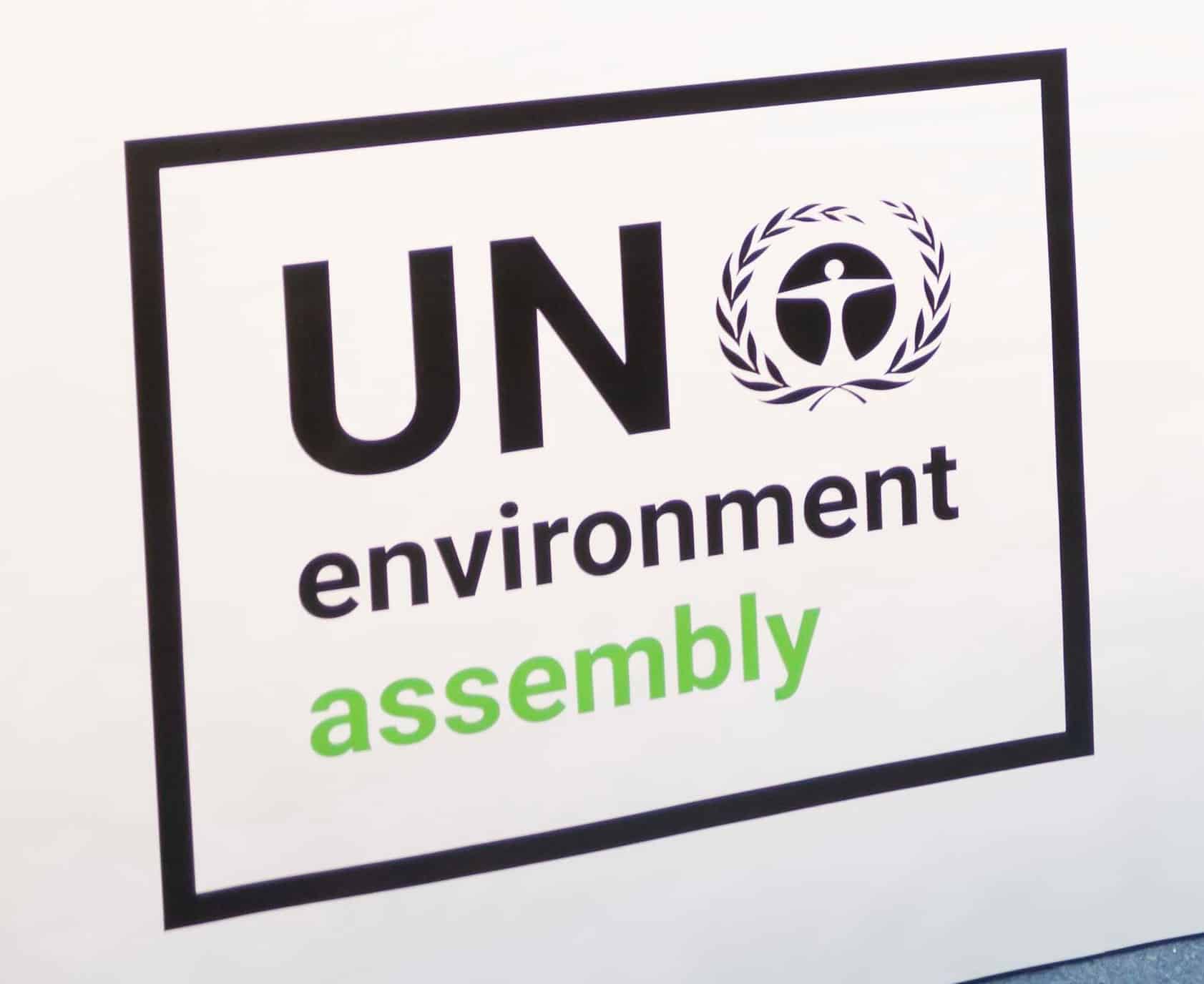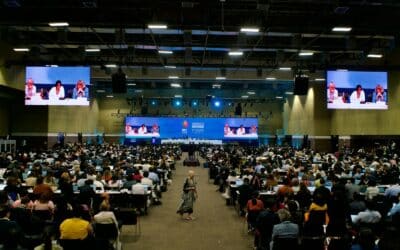Geoengineering Monitor March 2024 newsletter. Want to receive our newsletters by email? Sign up here.
Dear subscribers, welcome to the March edition of the Geoengineering Monitor newsletter! In it we cover:
- The fall-out from discussions around solar geoengineering at the UN Environment Assembly in Nairobi (UNEA-6);
- Our latest Geoengineering Map updates on CCS, CCUS and DAC;
- The implications of recent climate negotiations (COP28) on the geoengineering debate;
- Geoengineering in the news: Key media articles about geoengineering developments.
Pollution is not a climate solution: Victory for common sense declared at UNEA-6 as Global South countries win the battle for precaution over solar geoengineering
In the early hours of the morning of the 29th February efforts towards a Solar Geoengineering Non-Use Agreement took a leap forward as Swiss delegates were forced to withdraw (read also in Spanish) their resolution on solar geoengineering. The resolution called for the establishment of an “expert group” on Solar Radiation Management (SRM) technologies and risked beginning the process of legitimising solar geoengineering within UN spaces. African countries in particular led calls for the Assembly to back a precautionary approach to geoengineering, as has already been established by the Convention on Biological Diversity (CBD) and other UN bodies.
Civil society was also very much at the heart of opposition to the resolution, and the HOME! Alliance published a briefing for delegates (in English, Spanish and French) in the run-up to the Assembly. The HOME Africa working group on Geoengineering also published a Policy Brief which was distributed to African delegates.
Mfoniso Antia, HOMEF Program Manager and HOME! Africa Working Group, said of the negotiations: “Even if solar geoengineering is only deployed over the northern hemisphere, it will disrupt local and regional weather patterns and further imbalance the climate, with potentially catastrophic effects for Africa, including on water availability and food production. I’m happy for Africa’s leadership on geoengineering at UNEA-6, which builds on the African Ministerial Conference on the Environments decision on the non-use of solar geoengineering technologies.”
Barbara Ntambirweki, ETC Group and African Technology Assessment Platform (AfriTAP) added: “The Africa Group at UNEA-6 led powerful opposition to Switzerland’s solar geoengineering resolution—withdrawn this morning—forming the basis for future efforts towards a non-use agreement on solar geoengineering internationally.”
Read more on this issue: A solar geoengineering Trojan horse at UNEA-6 (ETC Group); Climate Vulnerable Nations Reject US-led Push for Solar Geoengineering at UNEA-6 (CIEL).
Technology reviews find that carbon capture schemes are still little more than a distraction from the urgent action required on climate change
Our most recent Geoengineering Map updates were published as a three-part series looking at schemes based on carbon capture: Carbon Capture and Storage (CCS), Carbon Capture Use and Storage (CCUS) and Direct Air Capture (DAC). These reviews are the result of hundreds of updates to the Geoengineering Map, and are an up-to-date, big-picture view on the current status of these technologies and their flagship projects.
The common themes running throughout the updates include the fact that carbon capture technologies are still extremely power-hungry and carbon-intensive, resulting in significant new emissions purely through the process of capturing carbon. Storage and use are also highly uncertain and fraught with risks, with most projects unable to guarantee that the carbon will stay where it is put, or putting carbon into short-lived products that will re-release it almost immediately. Another common theme is the extent to which these projects are dependent on huge amounts of public finance and subsidies, and increasingly also on selling carbon credits, which has been shown to be a deeply flawed climate mitigation approach.
Key updates include:
- Sleipner and Snøhvit CCS projects in Norway: Flagship CCS projects aren’t proof of concept, they actually highlight serious uncertainties;
- CCUS in e-fuel production: No evidence that carbon can be retained over meaningful timescales; and
- They can’t see the wood for the Mechanicaltrees: Carbon Collect and its mechanical tree farms.
Look out for our upcoming updates on marine geoengineering, due to be published later this month.
Analysis on geoengineering at COP 28 and its implications for future negotiations
In our last newsletter we covered the fact that geoengineering featured more prominently at COP28 than at any other prior COP, with over 80 pro-geoengineering side events taking place. This showed the extent to which UNFCCC has become a lobbying target for geoengineering proponents. Since then, more important analysis has been published on the subject.
In its post-COP blog, ETC Group describes how “The document containing the recent conclusions from the UN climate change conference in the United Arab Emirates (COP 28) is an egregious example of an official statement crafted to appear to be addressing a crucial problem, whilst skilfully disguising the fact that many decisions taken will actually worsen that problem. A perverse narrative has been forced through, hiding a complete lack of real action.” The article discusses how a little-understood loophole in recent texts calls for ‘climate neutrality’ or ‘net zero’ by 2050, rather than real emissions reductions. This in theory even allows greenhouse gas emissions to increase if they are ‘compensated’ for or ‘offset’ through carbon markets, and/or by removing carbon from the atmosphere, which would include Carbon Dioxide Removal geoengineering schemes such as Bioenergy with CCS (BECCS) and DAC.
Carol Bardi, coordinator of the Solar Geoengineering Non-Use Agreement Initiative, has also looked at how the solar geoengineering debate has taken root within UNFCCC, and describes in a recent article that: “While civil society constituencies actively rejected solar geoengineering as a climate policy option at COP 28, an alternative discourse is taking shape in a few Global North institutions, pushed by a relatively small group of scientists and industry lobbyists funded by Silicon Valley billionaires and venture capitalists. The narrative here is that we might be able “to buy time” to realize the more transformative changes needed by artificially cooling the planet through SRM.” The article, published by The Heinrich Boll Foundation, outlines how the alarming number of side events by SRM advocates in Dubai signalled the start of a serious push within the climate negotiations by solar geoengineering proponents, and that civil society needs to be ready to counter even more pro-SRM lobbying at COP29.
Geoengineering in the news
Legal Planet: The global conversation about solar geoengineering just changed at the UN Environment Assembly. Here’s how.
Financial Times: UN environment chief warns on lack of climate engineering controls
EuroNews: Sun blocking technologies a no-go for now after UN countries voice serious concerns
Devex: Solar Geoengineering rejected at 6th UN Environment Assembly
BNN: Global Push Against Solar Geoengineering: UNEA-6 Halts Risky Climate Fixes
The Guardian: Switzerland calls on UN to explore possibility of solar geoengineering
Nation: UNEA-6: Countries reject solar engineering as way to combat climate change
Cambridge University Press, Transnational Environmental Law: Towards a Non-Use Regime on Solar Geoengineering: Lessons from International Law and Governance
Reuters: Carbon capture tech a ‘complete falsehood’, says Fortescue Metals chairman
DeSmog: Drax Wants to Capture State Subsidies, Not Carbon
The Next Web: World’s largest carbon capture plant is UK’s ‘next big white elephant’
The Guardian: Drax gets go-ahead for carbon capture project at estimated £40bn cost to bill-payers
.coda: In the Swedish Arctic, a battle for the climate rages



